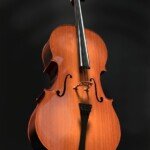Beyond Store Flooring: Your Comprehensive Guide to Successfully Reselling Used CNC Machines
The industrial landscape is constantly evolving, and for mechanical workshops or manufacturers that upgrade their capabilities, the question of how to deal with older CNC equipment will inevitably arise. Selling used CNC machines can be a great way to recoup a lot of capital, free up valuable ground space and fund new investments. However, browsing in the second-hand machinery market requires careful planning and insight. Whether you are an experienced store owner or a downsizing after a project, this guide provides actionable steps and expert knowledge to maximize your returns and ensure a smooth deal.
Why resell? Understand your choices
CNC machines represent large amounts of capital investment. Selling them when no longer vital to your core operations is not only practical; it is often financially strategic. The second-hand CNC market is booming because:
- The buyer’s needs exist: Startups, smaller stores, studios focus on specific niche markets and businesses in development areas, actively seeking reliable, higher equipment with lower initial costs than new machinery.
- Restore investment value: Reputable brands Well maintained machines retain significant residual value.
- Optimization operation: Freeing up space and capital can invest in new technologies that are more suitable for current production or capacity needs.
List key precautions before the machine
It’s tempting to jump straight to listing your CNCs, but preparation is important:
-
Honesty Condition Assessment: This is the cornerstone of successful sales. Beyond the rough look.
- Mechanical: Check bed, slides, spindle, rebound, wear, lubrication system. Is there any structural damage?
- Control and Electronics: Does control (e.g. Fanuc, Siemens, Heidenhain, Mitsubishi) correctly strengthen the power supply? Is there an error code? Is the battery saved? Is the servo/drive system running normally?
- Accuracy and performance: The machine can still retain tolerances in its original specifications (if there is evidence)? Has it collapsed? If so, what repairs were made?
- cosmetic: Although a mechanic, the clean, tailor-marked machine inspired buyers’ confidence. Severe rust or physical damage greatly devalues the machine.
- Service History: Detailed maintenance logs, repair records (especially major overhauls) and calibration reports are gold. They documented the status of care and verification.
-
Collect key documents: The buyer needs proof and information.
- Original manual: Operator, maintenance, programming manuals, electrical and hydraulic drawings.
- Control information: Detailed information about specific software versions and parameters.
- Certification: Documentation related to calibration or past performance testing.
- Sales order: If you purchased it, include the previous bill.
-
Deep cleaning and cosmetic modification: $5,000 in cleaning and paint finishes may recoup $10,000 or more in sales prices. Remove debris, coolant residue and dirt. Make sure the machine looks good. Degreasing, lubricates distinct moving parts.
- Determine the specifications and functions: Precise technical details are not negotiable. document:
- Machine manufacturing, model, year of manufacturing
- Control model and software version
- Table size, travel (X, Y, Z), spindle taper (e.g., CAT40, BT30, HSK63), spindle speed/HP
- Tool changer capacity (number of tools, type – e.g. umbrella, chain)
- Optional equipment (detection, tool preset, coolant through spindle, rotary table, pallet change table)
- Voltage, phase, ampere requirements
- Approximate weight and size
Determine the correct price: Evaluate strategy
Setting unrealistic prices can scare buyers or put money on the table. Consider the following approach:
- Market Research: Research the current list of comparable machines (same manufacturing, model, similar conditions, year, options) on the main platform (e.g., Machinenetools.com, eBay, dealer website). Looking for "Sell" List.
- depreciation: The new CNC machines depreciated rapidly in the first few years and then became slower. Typical depreciation guides (OEMV, Blue Book) offer a wide range of trends/slumps without regard to conditions or market demand.
- Replacement cost and value: cost New A machine with equivalent functionality has nothing to do with setting a used price, but comparing it highlights the buyer’s savings opportunity. What to focus on Second-hand market Bear.
- Place: Machines located in industrial hubs or easy-to-use locations attract more buyers and are slightly higher in price than remote areas (consider the impact of logistics costs).
- timing: Market demand fluctuates. Economic conditions and interest rates significantly affect buyers’ appetite. Be prepared to adapt.
- Obtain professional evaluation (optional for high value machines): Reputable use machinery dealers or certified appraisers can provide formal valuations based on conditions and market data. For machines worth over $50,000, this is usually worth it.
Choose the right sales channel: Where to sell
Selecting a market will affect visibility, price realization, sales speed and energy:
- Online use of machinery markets (e.g., Machinenetools.com):
- advantage: Among serious industrial buyers, global visibility is high. Specialized platforms attract targeted traffic.
- shortcoming: Listing fees, commission structure (percentage of sales price). There may be potential for tires. Efforts need to be made professionally managed.
- Auction platforms (e.g., online industrial auction):
- advantage: Can be sold quickly. A wider audience is similar to the market. Defined sales time range.
- shortcoming: Less control over the final price (depending on the tendering activity). Auction fee. If participation is low, the risk of sales is lower than market value. Buyer logistics becomes your responsibility.
- Sold directly to second-hand machinery dealers:
- advantage: The fastest and easiest option. Dealers handle inspections, logistics, listing and payment risks. Minimum effort is required.
- shortcoming: The lowest potential price. Dealers need to make a profit, so their offer is much lower than expected retail.
- Transactions with OEM or new machine dealers:
- advantage: If you are purchasing a new device, please be convenient. Simplify the entire upgrade process. Dealers will include value factors into new machine transactions.
- shortcoming: Trade value is usually significantly lower than private sales value. Less negotiation ability.
- Direct sales of end users (network, industry contacts, local advertising):
- advantage: Cancel the intermediary fee. Potential for higher sales prices. Sales can be customized and relationships are established.
- shortcoming: Significantly slow. Dedicated efforts are required to find qualified buyers. The risk of reviewing buyers and handling/shipping is higher.
Navigate the sale and end the deal
- High-quality demonstration:
- Photos/Video: Capture high resolution photos from multiple angles: overall machine, control panel, work area, spindle, tool changer, electrical cabinet (clean!). A short video showing the machine power supply, the reposable shaft and the running spindle can be priceless.
- Detailed list description: Detailed and transparent. include all Collected specifications, Full disclosure In any known issues (even minor issues), maintenance history highlights, check reports (if any), and the reasons for the sale. Honesty prevents disputes from happening later.
- Professional communication: React quickly and professionally to serious inquiries. Be prepared to answer technical questions accurately. Serious buyers are encouraged to inspect.
- Promote inspection: Plan detailed buyer inspection. If the contract agrees, allow them to access the machine and run simple cycles. There is a place to answer questions, but give them space to check independently.
- Master negotiation:
- Know your minimum acceptable price in advance.
- Learn what is negotiable (machine price) and what is not (basic machine facts).
- Be prepared to confirm your price with documentation and comparison data.
- Negotiate based on your price tag, but it is realistic based on conditions and market feedback.
- Safe payment: Never release the machine until the payment is fully cleared. Safety Methods for Use – Bank Wire Transmission is standard. Certified checks may take time to clear. Avoid making large amounts of cash or personal checks. The payment terms are clearly stated.
- logistics: The responsibilities are clearly defined (such as questions like ExW – Ex Works, which are common for used machinery: the buyer arranges and pays for all operations/shipments). Help buyers rigging by preparing the machine (draining the liquid as needed, ensuring moving parts, providing the weight/size of the machine). Once loaded, the signed sales list is obtained to transfer ownership.
Conclusion: Turn idle assets into opportunities
Reselling used CNC machines requires diligence, honesty and market visibility, but the rewards – recovering capital and improving store efficiency – are huge. By thoroughly preparing your machine, accurately evaluating it, selecting the right sales channels and professionally conducting negotiation and closing processes, you can turn idle assets into valuable funds for the next growth step.
While the second-hand market offers great opportunities, sometimes New Technology is the best path. If precision, advanced features and maximum efficiency are crucial, then working with state-of-the-art manufacturers is crucial. That’s where Greglight Gragenting Good at it. Equipped with cutting-edge five-axis CNC machining technology and extensive production expertise, Greatshile specializes in solving complex metal parts manufacturing challenges. We provide quick custom processing of a wide range of materials supported by a comprehensive one-stop post-processing and completion service. For businesses that prioritize top quality and performance, investing in precision machining from Greatlight provides unparalleled value. Contact Greatlight today to explore how our advanced features can improve your next project of precision. [Customize Your Precision Parts Now!]
FAQ (FAQ)
Q1: How much is the CNC machine I have used?
A: Unfortunately, there is no answer. Value depends heavily on specific factors: manufacturing, model, age, hours/runtime, overall mechanical and electrical conditions, control systems, including tools/options, service history, current market demands, and your geographical location. Studying comparable machines on second-hand machinery websites is the best place to start. For high-value machines, professional evaluations may be worth it.
Question 2: What documents do I absolutely need to sell my CNC?
A: At least collect the operator and maintenance manuals and any electrical/hydraulic schematics. Maintenance records, repairs (especially major spindle reconstructions) and calibration reports greatly increase buyer confidence and machine value. The original sales order you purchased is also helpful.
Question 3: Should CNC machines be repaired for sale?
A: Focus on basic repairs that affect core functions or safety. The major undisclosed issues found during inspections usually kill the deal or significantly lower the price. Be transparent about any issues. A secondary cosmetic repair or thorough cleaning is often worth the investment. A non-functional machine ("As is" Sales) will be significantly lower than running sales and limit your buyer pool.
Question 4: Is it better to sell privately or through a dealer?
A: It depends on your priorities:
- Private Sales: Higher potential returns, but require more time, energy, and requires self-management of inspections, negotiations, payments and logistics. Dealing with non-serious buyers is more risky.
- Dealer Sales: The fastest, the simplest, the least effort. Guaranteed (albeit lower) payment. Dealers manage everything. Ideal speed or simplicity is the key. Consider brokers who may have higher returns with direct dealers.
Q5: How to handle logistics safely?
Answer: Security is not negotiable! Hire professional industrial rigging with CNC machine experience. Clear preparation is the key:
- Fix all moving parts (axis lock).
- Drain the coolant tank.
- Remove heavy tools/excess fixtures.
- Provides accurate weight and size.
- Make sure to clear the loading device. Obviously, the liability for damage during loading/shipping is defined (usually handled by the buyer/their rigging). Make sure the rope has proper insurance.
Question 6: Will there be tax impacts when selling used equipment?
A: Usually, yes. Revenue for sales is often considered ordinary income (the difference between the selling price and the book value of the assets on the balance sheet). However, tax regulations vary greatly depending on location and business structure. Always consult your CPA or tax consultant Before completing a sale, learn about the specific impact on your business. Proper documentation (sales order) is essential for tax reporting.

















